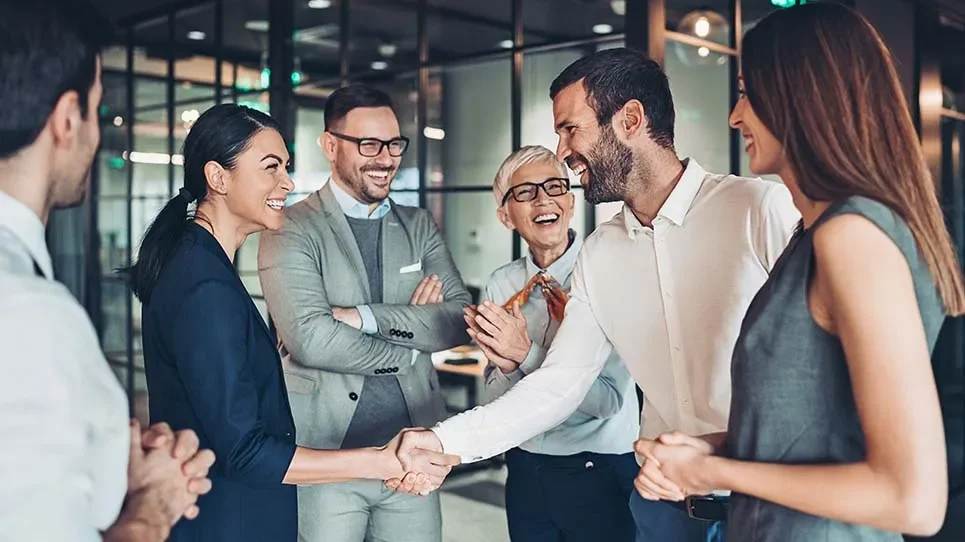This year’s VelocityEHS User Conference theme of “Lighting the Way,” was more than just an inspirational catchphrase. The goal of the conference was to bring VelocityEHS customers together with our partners and experts to learn, share and plan a strong, bright future together.
Generational Diversity in the Workplace
A standout session of the conference was the Building Safety Cultures for Multi-Generations discussion, led by VelocityEHS Principal Solutions Executive for Safety and Operational Risk, Marc Juaire, with panelists from VelocityEHS partner Fit For Work and customers Allegion and Komatsu sharing insights on varying generational perspectives in the workplace, considering effective communication, customized training, leadership approaches, technology utilization, and measuring success.
In a world where technology is advancing rapidly and the workforce is made up of the widest generational diversity than ever before, bridging the gap between generations has become more crucial than ever before. Colleagues in the workplace today span four generations, who have each experienced the world very differently:
- Boomers (Generation W), born between 1946-1964
- Gen Xers, born between 1965-1980
- Millennials (Generation Y), born between 1981-1996
- Gen Zers, born between 1997-2012
Millennials Bridging the Generational Gap
A focus of the discussion was on millennials, currently the largest generational population in the workplace. As the generation who grew up alongside the internet, millennials have a unique perspective to serve as a bridge between previous generations, who may not be as tech-savvy, and those who grew up immersed in technology.
Millennials have become the generation who aspire to drive positive change by bridging generational divides, challenging stereotypes, and fostering inclusivity. By prioritizing empathy and understanding, millennials can help create workplaces where everyone feels respected, empowered, and safe to thrive in their roles.
One of the key pitfalls to avoid in forging better workplaces is operating from assumptions about others based on generational stereotypes. Whatever the common jokes or comments are on the attitudes, behaviors or opinions of each generation, it’s vital to have real conversations on what each group needs to feel safe and supported. Challenging these assumptions and fostering open dialogue breaks down these generational barriers and builds stronger, more cohesive teams. As millennials progress into management positions, they wield even greater influence in driving positive change and dispelling those harmful stereotypes.
True inclusion goes beyond surface-level gestures; it requires a deep commitment to understanding and meeting people where they are. This involves communicating effectively through different styles and mediums, ensuring that everyone feels heard and valued.
Boomers prefer to call people directly with a question or issue; yet Gen Zers feel that calling out of the blue is aggressive or intrusive, they prefer email. Inclusion means fully recognizing and respecting the diverse ways in which people learn, interact with technology, and process change, and by then incorporating that understanding to find an easy path to the best outcome of the conversation for everyone.
Cultural awareness also plays a pivotal role in fostering a safe and inclusive workplace environment. By understanding the unique backgrounds and experiences of all colleagues, we can create a culture of respect, empathy, and psychological safety. This extends to addressing sensitive issues like workplace violence and organizational change, which are often overlooked or brushed aside by organizational leadership – who have been made up of older generations.
Soft Skills = Human Skills
Moreover, it’s essential to recognize the value of “soft skills” today in the workplace – what can be more accurately described as simply “human skills.” These skills encompass empathy, communication, and the ability to support and empower others, where for a long time, employees were told to “leave their emotions at the door.”
By cultivating these common, human skills within ourselves and our teams, we can optimize our workplaces and create environments where everyone feels valued and supported.
VelocityEHS organizes events all year to help you learn and excel in your role as an EHS professional. Check out our Events page to see what’s coming up next.
